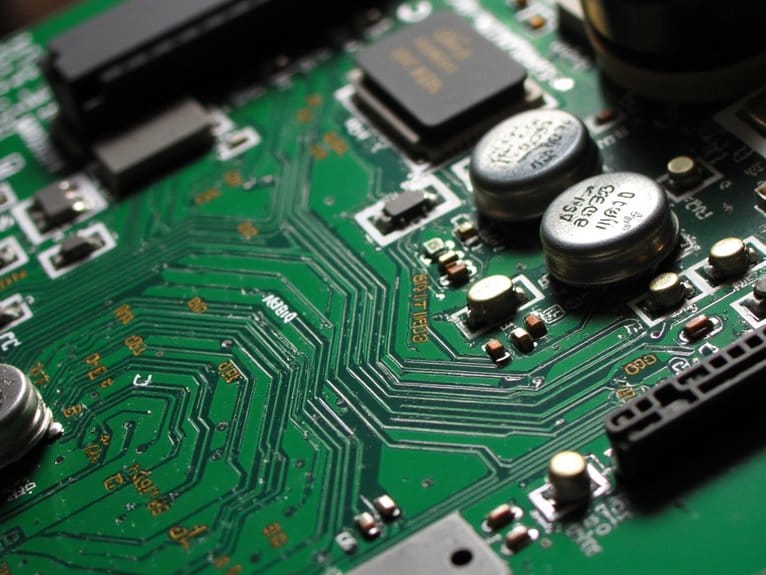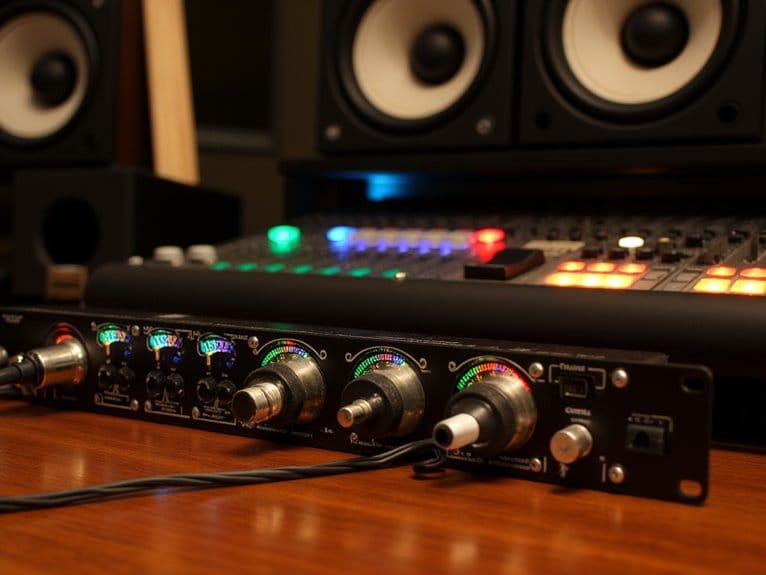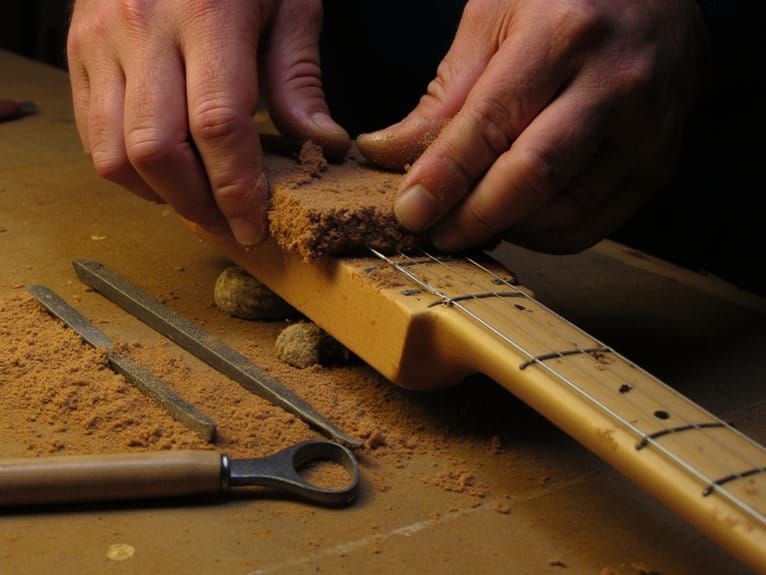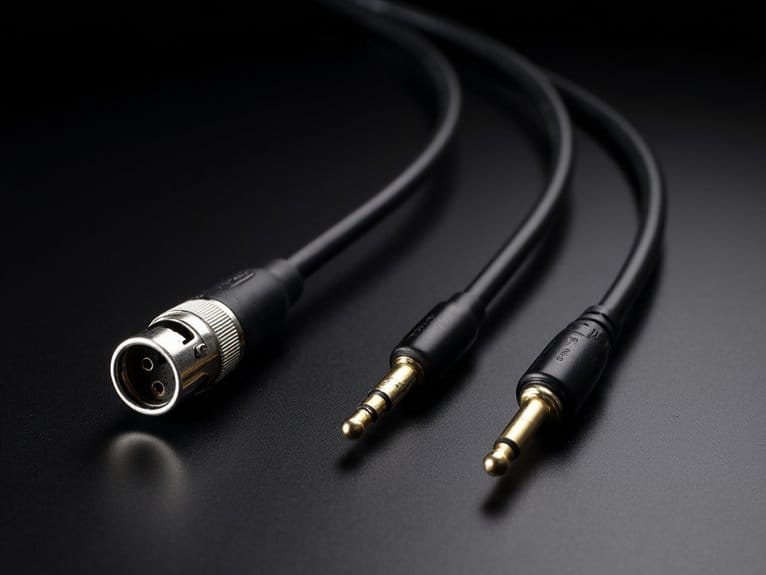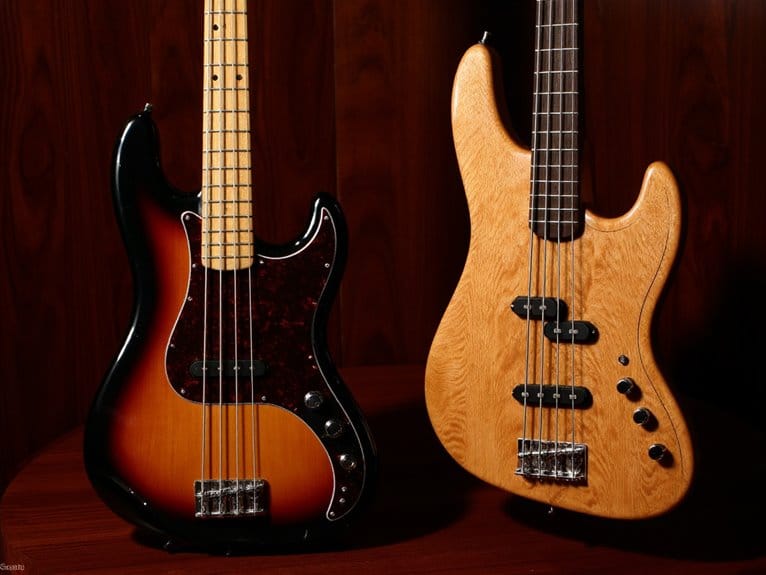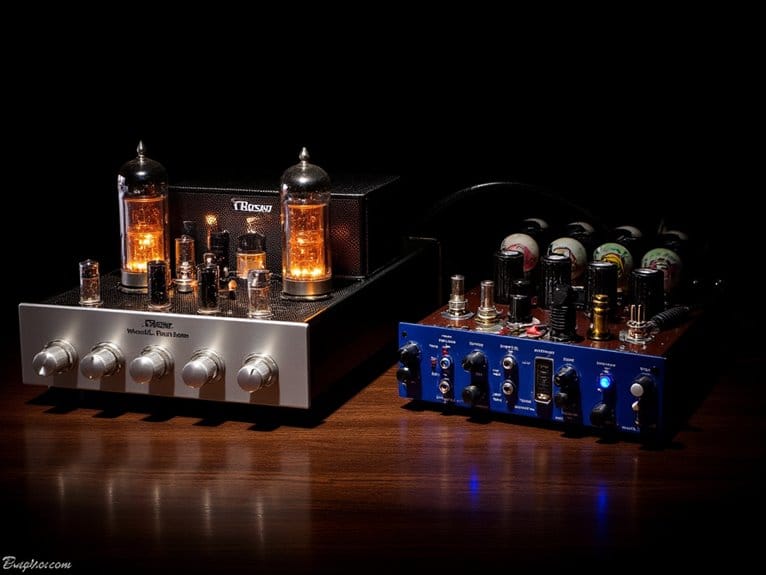Wavetable Synthesis: Modern Digital Techniques
Modern wavetable synthesis stores 64 pre-recorded waveforms as PCM files in memory, then morphs between them using real-time interpolation algorithms to create evolving textures you can’t achieve with traditional oscillators. You’ll control this morphing through LFOs, envelopes, and MIDI controllers, while advanced techniques like vector synthesis and spectral processing reshape harmonics on-the-fly. Popular plugins like Serum integrate seamlessly with your DAW, synchronizing modulation to project tempo and offering macro controls that simplify complex parameter automation into single lanes, revealing the thorough creative potential that awaits exploration.
We are supported by our audience. When you purchase through links on our site, we may earn an affiliate commission, at no extra cost for you. Learn more.
Notable Insights
- Modern wavetable synthesizers store collections of 64 single-cycle waveforms as compressed PCM WAV files in memory slots.
- Real-time morphing uses interpolation algorithms to create smooth transitions between waveforms during performance and automation.
- Advanced techniques like vector synthesis, spectral processing, and modulation enhance static waveforms into dynamic, evolving textures.
- DAW integration enables tempo-synchronized LFOs, macro controls, and standardized 2048-sample wavetable formats across different synthesizer engines.
- Custom wavetable creation from audio samples allows producers to develop unique sonic identities beyond preset libraries.
Digital Wavetable Architecture and Storage Methods
When you’re diving into wavetable synthesis, understanding the digital architecture becomes essential because it’s fundamentally different from traditional analog oscillators that generate waveforms in real-time.
Wavetable synthesis breaks from analog tradition by using pre-stored digital waveforms instead of real-time generation.
Instead, you’re working with pre-stored collections of single-cycle waveforms arranged sequentially in memory slots, typically 64 per table, which are stored as digitally sampled waveforms in standard PCM WAV files.
Modern synthesizers employ sophisticated wavetable compression methods to reduce memory footprint without sacrificing fidelity, while digital storage optimization techniques like latent space factorization help organize waveform data efficiently.
These array-like memory buffers enable real-time access with fractional indexing and modulo operations, ensuring smooth playback without discontinuities as you sweep through the table’s harmonic content.
Real-Time Modulation and Control Systems
Bringing wavetables to life requires sophisticated real-time modulation systems that transform static waveform collections into dynamic, evolving sounds through continuous parameter manipulation.
You’ll find that modern wavetable synthesizers employ diverse modulation techniques, including envelope generators, LFOs, and velocity-sensitive controls that create expressive timbral shifts.
Control interfaces like MIDI controllers, expression pedals, and touch-sensitive surfaces enable intuitive performance integration, while dynamic routing matrices let you assign multiple modulators to single parameters simultaneously.
Real time morphing uses interpolation algorithms to smoothly blend between waveforms, preventing audio artifacts during shifts.
Desktop synthesizers like the Hydrasynth offer powerful wave morphing engines with hundreds of waveforms for extensive real-time sound manipulation capabilities. These features make desktop synthesizers like the Hydrasynth a favorite among musicians and producers who seek to push the boundaries of their sound design. In addition to high-end options, there are also many inexpensive synthesizers available that provide impressive capabilities, allowing beginners to explore their creativity without breaking the bank. Whether you’re a seasoned pro or just starting out, the variety of synthesizers on the market today ensures that everyone can find a tool that fits their needs.
Advanced Sound Generation Techniques
While basic wavetable synthesis relies on simple playback and position scanning, advanced techniques reveal the format’s true creative potential through sophisticated manipulation methods that transform how we approach electronic sound design.
Advanced wavetable manipulation techniques unlock sophisticated sound design possibilities that transcend basic playback through creative synthesis methods.
You’ll find wavetable manipulation techniques extend far beyond linear interpolation, incorporating vector synthesis, real-time morphing algorithms, and spectral processing that reshape harmonic content on the fly.
I’ve discovered that harmonic spectrum shaping becomes particularly powerful when you combine ring modulation, phase modulation, and frequency modulation with your wavetable output, creating complex timbres that evolve unpredictably.
You can also automate scanning direction, speed, and start points while applying subtractive filtering, enabling detailed harmonic morphing that shifts seamlessly from acoustic-instrument-like tones to abstract textures, broadening your sonic possibilities considerably.
Integration With Contemporary DAW Environments
Modern wavetable synthesizers have transformed from standalone hardware units into sophisticated software instruments that integrate seamlessly with today’s digital audio workstations, fundamentally changing how producers approach electronic music creation.
You’ll find that plugins like Serum and Essential leverage DAW automation capabilities to synchronize LFOs with your project tempo, while macro controls consolidate complex parameter changes into single automation lanes.
Your DAW’s built-in effects chains enhance wavetable timbres further through distortion and waveshaping, while embedded wavetable editors eliminate the need for external wave editing software, streamlining your creative workflow considerably.
Creative Applications in Electronic Music Production
Three fundamental approaches define how wavetable synthesis revolutionizes electronic music production: morphing between waveforms creates dynamic textures that breathe life into static arrangements, custom wavetable creation from audio samples releases personalized sonic signatures, and hybrid combinations with FM or subtractive techniques yield complex timbres impossible through traditional methods alone. Moreover, the integration of wavetable synthesis with other synthesis methods allows producers to explore uncharted soundscapes, heightening creative possibilities. By understanding fm synthesis basics and techniques, artists can layer intricate harmonic structures atop wavetable sounds, resulting in rich, textured compositions that captivate the listener. This blend of methodologies not only enhances artistic expression but also pushes the boundaries of what is achievable in contemporary music production.
You’ll find wavetable synthesis particularly powerful for crafting creative soundscapes across EDM, synthwave, and ambient genres, where evolving textures become essential elements rather than mere decoration.
On a final note
You’ve now got the foundation to harness wavetable synthesis effectively in your productions, though I’ll admit the learning curve can feel steep initially. Modern digital techniques, from granular manipulation to real-time morphing, offer unprecedented creative control that wasn’t possible just a decade ago. Whether you’re crafting evolving pads or aggressive leads, these tools integrate seamlessly with today’s DAWs, letting you sculpt truly unique sonic textures.

